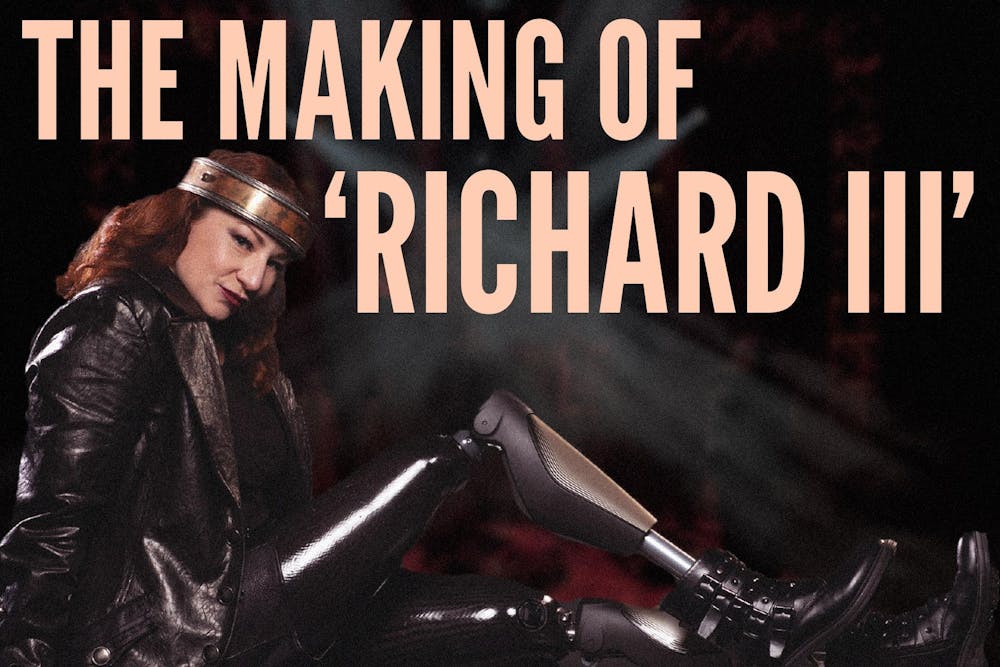This Saturday, me and 18 of my closest friends journeyed to Chi-town to see the Chicago Shakespeare Theater’s (CST) production of “Richard III” at Navy Pier. After a lovely dinner at Margaritaville, we sat down in the theater, chatting excitedly while actors in masks and white coats drifted across the stage and into the audience. As a group working to perform the play in just over a month, we had high expectations for a professional production.
Since the middle of January, the Not-So-Royal Shakespeare Company (NSR) has been working on perfecting our own version of the Bard’s treacherous tale. The play follows Richard Plantagenet, Duke of Gloucester, as he claws his way towards the ultimate prize: the Crown of England. Tensions are high amidst the deaths of Henry VI and Edward IV, and questions of who shall occupy the throne become twisted and muddled with the progression of time. Richard will stop at nothing — and for no one — until he takes the throne.
“Richard III” at the Chicago Shakespeare Theater, directed by Edward Hall, stars Katy Sullivan in the titular role — the first ever woman with a disability to play the character in a major U.S. production. The production is staged like the cast and crew are in a 1930s psych ward to mimic the state of Richard’s psyche. All of the costumes were highly accurate — with the character of Jane Tyrell even sporting a look akin to Miss Ratched of “One Flew Over the Cuckoo’s Nest” — and the special effects, lighting and sound aided in the construction of an utterly vile plot. While I was impressed with the production aspects and with performances from Scott Aiello (George, Duke of Clarence), Debo Balogun (Sir Richard Ratcliffe) and Sean Fortunato (Lord Rivers/Duchess of York), there were many things that I questioned the use of or the portrayal of.
One of the main parts of the play I was concerned with was the level of violence. Don’t get me wrong — “Richard III” is a harrowing and bloody play, but there were parts of the show in which the violence seemed gratuitous. Why did Lord Hastings have to be cut up with a chainsaw? Why did Richard essentially kill every single person who crossed his path? Why were the severed (puppet) heads of the two princes in a glass jar necessary to tell their mother that they had died?
There were also many issues with the strength of the performances — sometimes there was too little, and sometimes there was too much. In general, the women of the play — notably Lady Anne and Queen Elizabeth — felt very lackluster and gave into Richard’s whims with little persuasion. Is this how the script is originally written? Unfortunately, yes. But is there still a way to play it in a way in which the women are given more nuance and control over their unfortunate circumstances? Also yes. Other performances made me raise my eyebrows considering some choices that were made. Our group reached the general consensus that there were many powerful decisions showcased throughout the whole performance, but their place in the show didn’t always make much sense.
Regardless of my perspective, it was an enjoyable experience and made me further appreciative of the people I work with and the process we’ve been going through. Reading and performing Shakespeare in an informed and impactful manner is not easy, and it takes a lot of talent to get a message across to an audience. I think the CST cast definitely accomplished this task, and I have faith that NSR will deliver in full.










